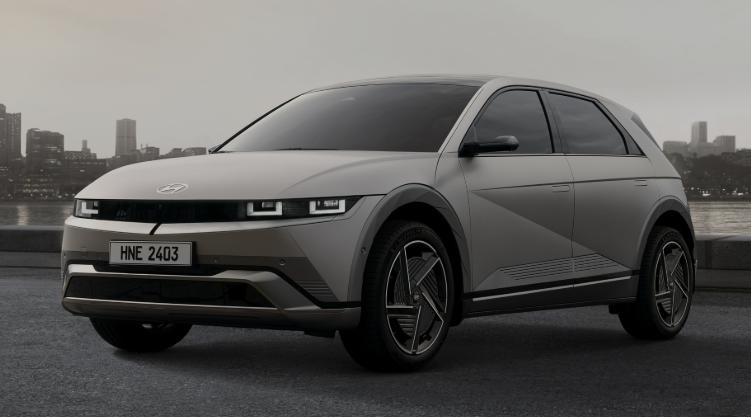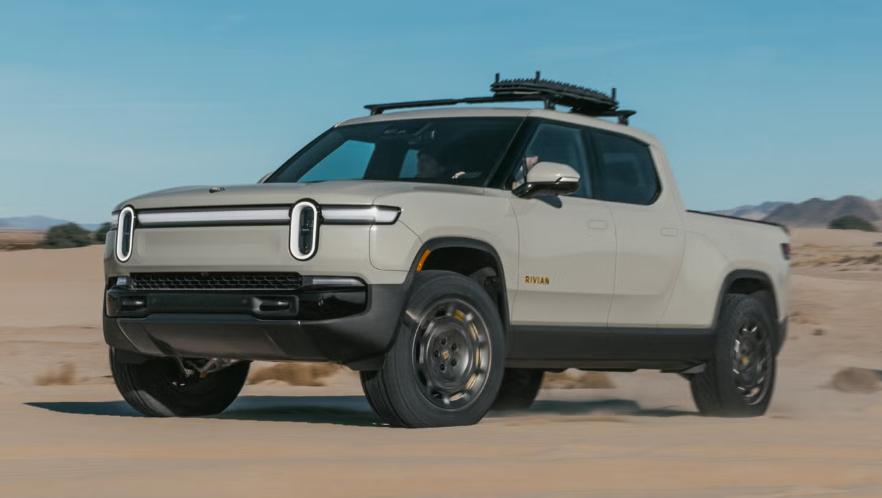L' unité de contrôle de charge intégrée (ICCU) devenant un composant central des véhicules électriques, ses performances, et ses pannes potentielles, ont un impact direct sur l'expérience quotidienne des conducteurs de véhicules électriques. Si les ICCU améliorent l'efficacité de la charge, permettent une charge bidirectionnelle et simplifient l'architecture du véhicule, elles ne sont pas à l'abri de problèmes .
Dans cet article, nous explorerons les symptômes courants de défaillance de l'ICCU , les cas réels, les causes de ces problèmes et la manière dont les propriétaires de véhicules électriques peuvent les éviter et y répondre efficacement .
Que se passe-t-il lorsque l’ICCU tombe en panne ?
Étant donné que l'ICCU est responsable de la gestion de la charge CA et CC, de la conversion de la tension pour les systèmes auxiliaires et, dans certains cas, de l'activation des fonctions véhicule-charge (V2L) ou véhicule-réseau (V2G) , une défaillance peut entraîner :
-
Impossibilité de charger la batterie
-
Perte soudaine des systèmes d'alimentation 12 V
-
Témoins d'avertissement ou messages d'erreur de charge sur le tableau de bord
-
Perte des fonctionnalités d'alimentation bidirectionnelle (par exemple, V2L ou V2G)
Dans les cas les plus graves, une défaillance de l'ICCU peut entraîner le passage du véhicule en « mode dégradé » ou le rendre complètement inutilisable jusqu'à son entretien.
Rapports de défaillance de l'ICCU dans le monde réel
Étude de cas Hyundai et Kia
Les propriétaires de Hyundai IONIQ 5 et de Kia EV6 (toutes deux basées sur la plateforme E-GMP) ont signalé des problèmes de charge liés à l'ICCU aux États-Unis, en Europe et en Corée du Sud. Les plaintes les plus fréquentes incluent :
-
La charge CA ne fonctionne pas (seule la charge rapide CC reste fonctionnelle)
-
L'ICCU tombe en panne dans les 20 000 premiers kilomètres
-
Remplacements répétés de pièces en raison de problèmes sous-jacents de logiciel ou de système de refroidissement
Dans certains cas, la panne a provoqué une décharge de la batterie 12 V , désactivant des systèmes tels que les serrures de porte, les lumières ou l'infodivertissement.
Causes courantes des défaillances des unités de soins intensifs en soins intensifs
1. Contrainte thermique
Les modules ICCU fonctionnent dans des environnements à haute tension et à haute température. Un refroidissement inadéquat ou des charges élevées et soutenues peuvent entraîner une surchauffe et une dégradation des composants.
2. Défauts de fabrication
Étant donné que les ICCU intègrent plusieurs fonctions dans une seule unité, une défaillance dans un sous-système (par exemple, un condensateur défectueux dans le convertisseur CC-CC) peut compromettre l'ensemble du module.
3. Bugs logiciels
Une mauvaise communication du micrologiciel entre l'ICCU et le système de gestion de la batterie (BMS) du véhicule ou le module de contrôle du groupe motopropulseur peut déclencher des pannes ou un refus de charge.
4. Pics de tension ou irrégularités du réseau
Une entrée CA incohérente ou des surtensions lors de la charge à domicile, en particulier celles provenant de circuits plus anciens ou non dédiés, peuvent endommager les composants électroniques sensibles de l'ICCU.
Signes indiquant que vous pourriez avoir un problème avec l'unité de soins intensifs
Soyez attentif aux signaux d’alarme suivants :
-
Tentatives de charge incohérentes ou infructueuses
-
Perte de fonctions électriques 12 V comme les lumières ou le verrouillage centralisé
-
Avertissements sur le tableau de bord tels que « Vérifier le système du véhicule électrique » ou « Erreur de charge »
-
Bruits de surchauffe ou de cliquetis pendant la charge
-
Baisse soudaine de l'autonomie ou de la vitesse de charge
Si l’un de ces problèmes se produit, arrêtez la charge et planifiez un diagnostic auprès de votre revendeur ou de votre centre de service.
L'ICCU peut-il être réparé ?
Dans la plupart des cas, l'ICCU n'est pas réparable et doit être remplacé dans son intégralité. En effet, il abrite des composants électroniques étroitement intégrés nécessitant une isolation haute tension.
La bonne nouvelle ? La plupart des remplacements d'ICCU sont couverts par les garanties du groupe motopropulseur des véhicules électriques , qui durent généralement 8 ans ou 160 000 km aux États-Unis. Cependant, le diagnostic peut prendre du temps et la disponibilité des pièces peut retarder les réparations.
Comment éviter les pannes de l'ICCU
Bien que vous ne puissiez pas contrôler la conception du matériel, vous pouvez prendre plusieurs précautions pour prolonger la durée de vie de votre ICCU et éviter les pannes :
1. Utilisez un équipement de charge de haute qualité
-
Choisissez des EVSE (équipements d’alimentation pour VE) certifiés UL ou CSA.
-
Installez un chargeur domestique de niveau 2 dédié avec une protection de circuit appropriée.
2. Évitez de charger pendant les pics de chaleur
-
Si possible, évitez de charger pendant les après-midi extrêmement chauds, surtout dans les garages mal ventilés.
-
Utilisez des programmes de charge pour charger tôt le matin ou la nuit lorsque les températures sont plus basses.
3. Activer les mises à jour OTA (Over-the-Air)
De nombreux constructeurs automobiles publient des mises à jour du micrologiciel pour corriger les bugs liés à l'ICCU. Assurez-vous que le logiciel de votre véhicule est à jour pour éviter les problèmes pouvant entraîner des pannes matérielles.
4. Surveillez régulièrement l'état de votre batterie 12 V
Comme l'ICCU alimente le système 12 V, un mauvais état de la batterie peut solliciter l'ICCU et réduire l'efficacité de la charge. Pensez à remplacer votre batterie 12 V tous les 3 à 5 ans.
5. Évitez les charges fréquentes à haute vitesse si elles ne sont pas nécessaires
Bien que l'ICCU gère principalement la conversion CA et basse tension, les charges rapides CC fréquentes peuvent exercer une contrainte thermique et électrique sur le système. Alternez entre les charges de niveau 2 et CC.
Que faire si vous suspectez une défaillance de l'ICCU
-
Arrêtez immédiatement la charge
Débranchez le véhicule pour éviter tout stress supplémentaire ou risque de panne électrique. -
Vérifier les messages d'erreur
Prenez note des avertissements du tableau de bord. Ils aident les techniciens à identifier les problèmes. -
Contactez votre revendeur ou fabricant
Demandez un rendez-vous de diagnostic et renseignez-vous sur l'historique de service ou les rappels de l'ICCU. -
Vérifier la couverture de la garantie
Assurez-vous que la garantie de votre groupe motopropulseur est active et couvre les remplacements ICCU (la plupart le font).
L'essentiel
À mesure que l' ICCU se généralise dans les architectures de véhicules électriques , comprendre son rôle – et ce qui se passe en cas de panne – permet aux propriétaires de prendre de meilleures décisions. Si la plupart des conducteurs ne seront jamais confrontés à un problème d'ICCU, ceux qui le seront constateront qu'une détection précoce et des habitudes de charge adaptées peuvent faire toute la différence.
En restant informé et en prenant des mesures simples comme maintenir votre logiciel à jour et charger dans les bonnes conditions, vous pouvez contribuer à garantir que votre véhicule électrique fonctionne correctement pendant des années .
Lectures recommandées : Comprendre l’ICCU dans les véhicules électriques : ce que c’est et pourquoi c’est important








Partager:
Comprendre l'ICCU dans les véhicules électriques : ce que c'est et pourquoi c'est important
Comment alimenter votre camping-car à l'aide d'une charge bidirectionnelle pour véhicule électrique ?
2 commentaires
ICCU failures in EVs can silently disable essential functions learn how to detect risks, manage recalls, and stay charged.
What a timely and well‑researched post! Clear and practical guidance on ICCU failures in EVs helps owners stay informed and prepared.